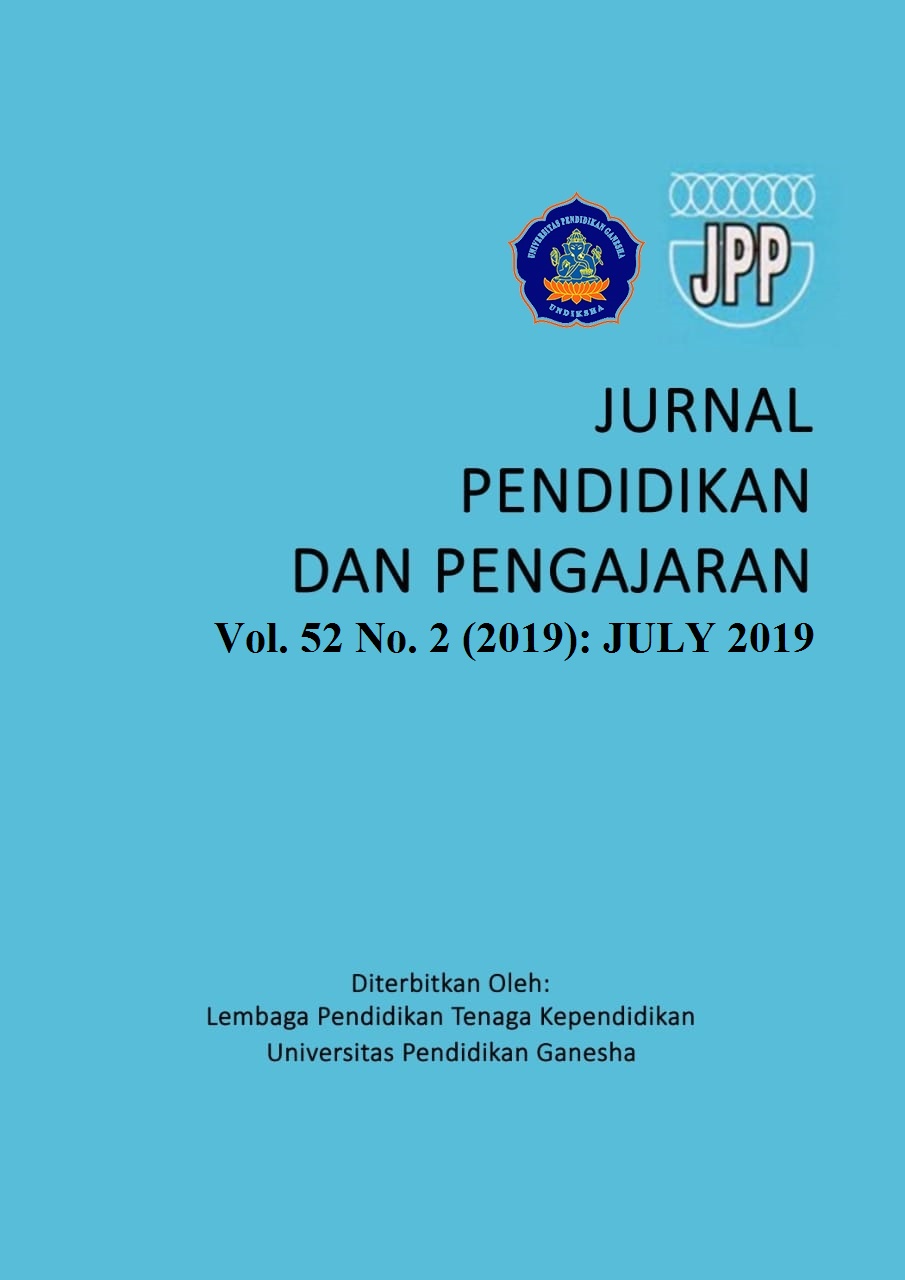Multicultural education management in Indonesian Language learning for foreign students in Indonesia
DOI:
https://doi.org/10.23887/jpp.v52i2.18260Keywords:
educational management learning, Indonesian language, foreign students, Indonesian cultureAbstract
The purpose of Indonesian language learning for BIPA (Indonesian Language Learning for Foreign Speakers) students emphasizes the involvement/participation of students in the learning process. This study contains 1) the nature of educational management for foreign students studying in Indonesia; 2) implementation of educational management in Indonesian language learning for foreign speakers (BIPA); 3) Indonesian language learning plans for BIPA students; and 4) the implementation of Indonesian language learning for BIPA students based on the introduction of Indonesian culture. Data collection techniques in this study use observation, document analysis, interviews and documentation techniques. Then, data analysis techniques are carried out by means of data collection, data reduction, data presentation and conclusion drawing. The management of education for BIPA students is different from the management of education for Indonesian students because BIPA students consist of various cultures and different countries. The implementation of education management must also be included in the semester implementation plan (RPS), learning syllabus, and learning evaluation in the BIPA class. Learning plans in the BIPA class are also important to highlight because they will present facts that are different from the language learning plan in the regular class. The results of this study are highlights and ideas in educational management and Indonesian language learning in the BIPA program. This can be implemented in Indonesian language learning for foreign students in the BIPA class to be more effective based on the introduction of Indonesian culture because foreign students will be enthusiastic and interested in Indonesia's rich and diverse cultural products. The implication of the idea in this article is that it can be used as a reference material in the implementation of BIPA program educational management and provide insight and reinforcement about the role of Indonesian culture as a supporting tool in the learning process in the BIPA program.
References
Budiana, N. B., Indrowaty, S. A., & Ambarastuti, R. D. (2018). Pengembangan Buku Teks BIPA Berbasis Multikulturalisme bagi Penutur Asing Tingkat Pemula. Diglossia: Jurnal Kajian Ilmiah Kebahasaan dan Kesusastraan, 9(2), 108-122.
Daft, R. L. (1991). Management. (2th ed). New York: Rinehart and Winston, Inc.
Kusmiatun, A., Suyitno, I., HS, W., & Basuki, I. A. (2017). Identifying Features of Indonesian for Speakers of Other Languages (Bipa) Learning for Academic Purposes. International Journal of Social Sciences & Educational Studies, 3(4), 197–207. https://doi.org/10.23918/ijsses.v3i4p197
Kusmiatun, A., Suyitno, I., Hs., W., & Basuki, I. A. (2017). Need Assessment of Learning Materials of Indonesian for Academic Purposes for Speakers of Other Languages. Researchers World: Journal of Arts, Science and Commerce, VIII(3), 151–159. https://doi.org/10.18843/rwjasc/v8i3/16
Nurgiyantoro. (2012). Penilaian Pembelajaran Bahasa Berbasis Kompotensi. Cetakan Keempat. Yogyakarta: BPFE Yogyakarta.
Nurlina, L., & Israhayu, E. S. (2016). BIPA Learning Material Development for Empowering Thailand Students’ Writing Competence. Educare, 7(1), 57–66.
Read, J. (2002). Innovation in Indonesian language teaching: an evaluation of the TIFL tertiary curriculum materials. University of Wollongong Thesis Collection. Retrieved from http://ro.uow.edu.au/theses/335
Reno, R. (2017). Pendidikan Multikultural dalam Pembelajaran Bahasa Indonesia Bagi Penutur Asing (BIPA) di Kantor Urusan Internasional dan Kemitraan (Kuik) Universitas Negeri Yogyakarta. Jurnal Spektrum Analisis Kebijakan Pendidikan, 6(4), 398-406.
Saddhono, K. (2015). Integrating culture in Indonesian language learning for foreign speakers at Indonesian universities. Journal of Language and Literature, 6(2), 273–276. https://doi.org/10.7813/jll.2015/6-2/58
Saputro, Ekaresta P. & Arikunto, Suharsimi. (2018). Keefektifan manajemen Pogram Pembelajran BIPA (Bahasa Indonesia bagi Penutur Asing) di Kota Yogyakarta. Jurnal Akuntabilitas Manajemen Pendidikan. Vol.6 No.1 April 2018 p.123-138.
Suparsa, I. N., Mantra, I. B. N., & Widiastuti, I. A. M. S. (2017). Developing learning methods of Indonesian as a foreign language. International Journal of Social Sciences and Humanities, 1(2), 51–57. https://doi.org/10.29332/ijssh.v1n2.41
Suyitno, I., Susanto, G., Kamal, M., & Fawzi, A. (2018). Cognitive Learning Strategy of BIPA Students in Learning the Indonesian Language. IAFOR Journal of Language Learning, 3(2), 175–190. https://doi.org/10.22492/ijll.3.2.08
Taftiawati, M. (2013). Strategi Komunikasi Pembelajar Asing dalam Pembelajaran BIPA Tingkatan dasar Universitas Pendidikan Indonesia. Tesis Universitas Pendidikan Indonesia. Bandung.
Toci, A. (2014). The importance of age in foreign language learning. Journal of Education
Umanistici, D. I. S., Coniugare, E. I. I., & Forma, R. (2017). Teaching materials and techniques needed by foreign students in learning Bahasa Indonesia. ISLLAC Journal of Intensive Studies on Language, Literature, Art, and Culture, 1(1), 54–63.
Downloads
Published
How to Cite
Issue
Section
License
Authors who publish with Jurnal Pendidikan dan Pengajaran agree to the following terms:- Authors retain copyright and grant the journal the right of first publication with the work simultaneously licensed under a Creative Commons Attribution License (CC BY-SA 4.0) that allows others to share the work with an acknowledgment of the work's authorship and initial publication in this journal
- Authors are able to enter into separate, additional contractual arrangements for the non-exclusive distribution of the journal's published version of the work (e.g., post it to an institutional repository or publish it in a book), with an acknowledgment of its initial publication in this journal.
- Authors are permitted and encouraged to post their work online (e.g., in institutional repositories or on their website) prior to and during the submission process, as it can lead to productive exchanges, as well as earlier and greater citation of published work. (See The Effect of Open Access)





